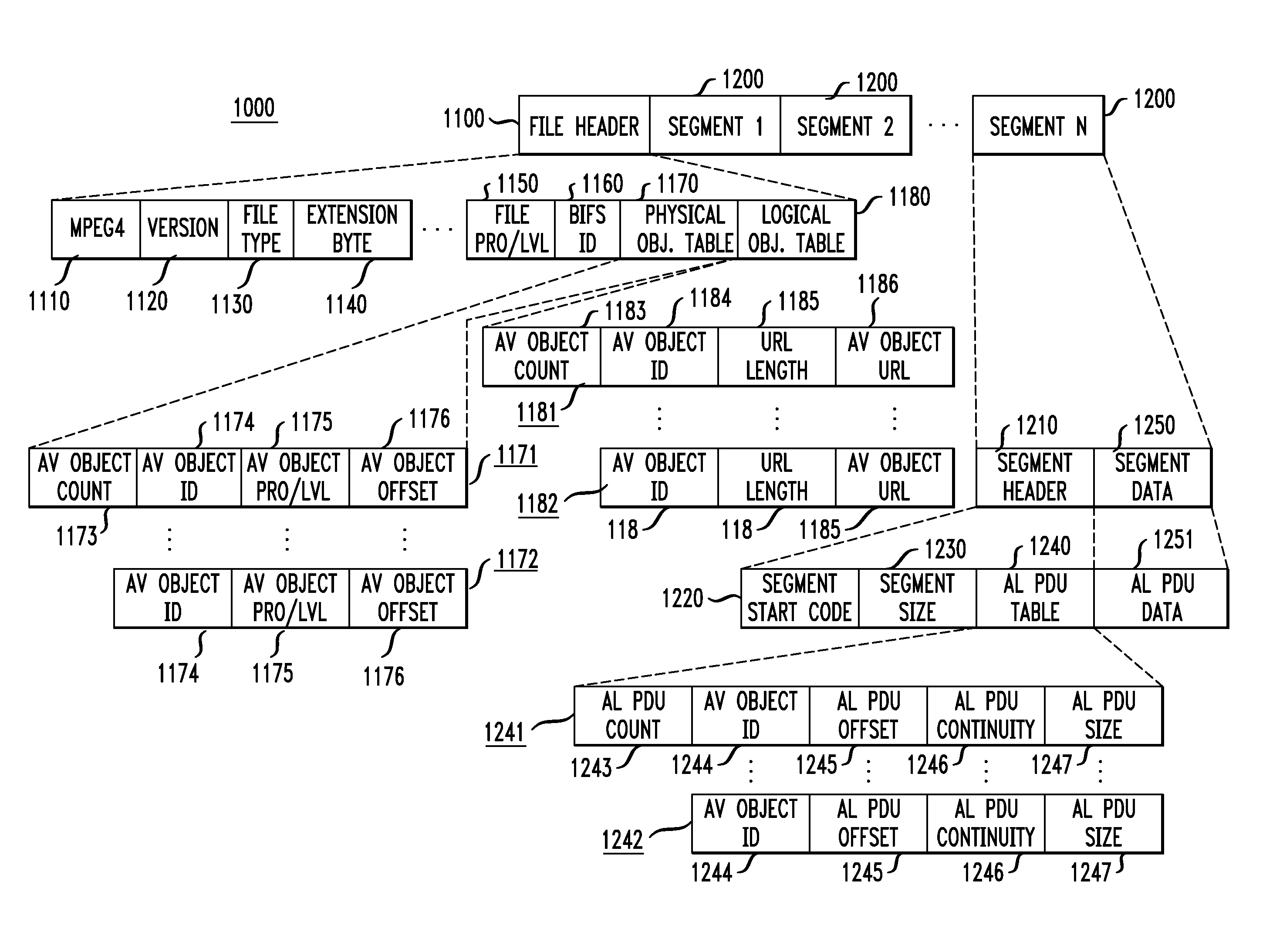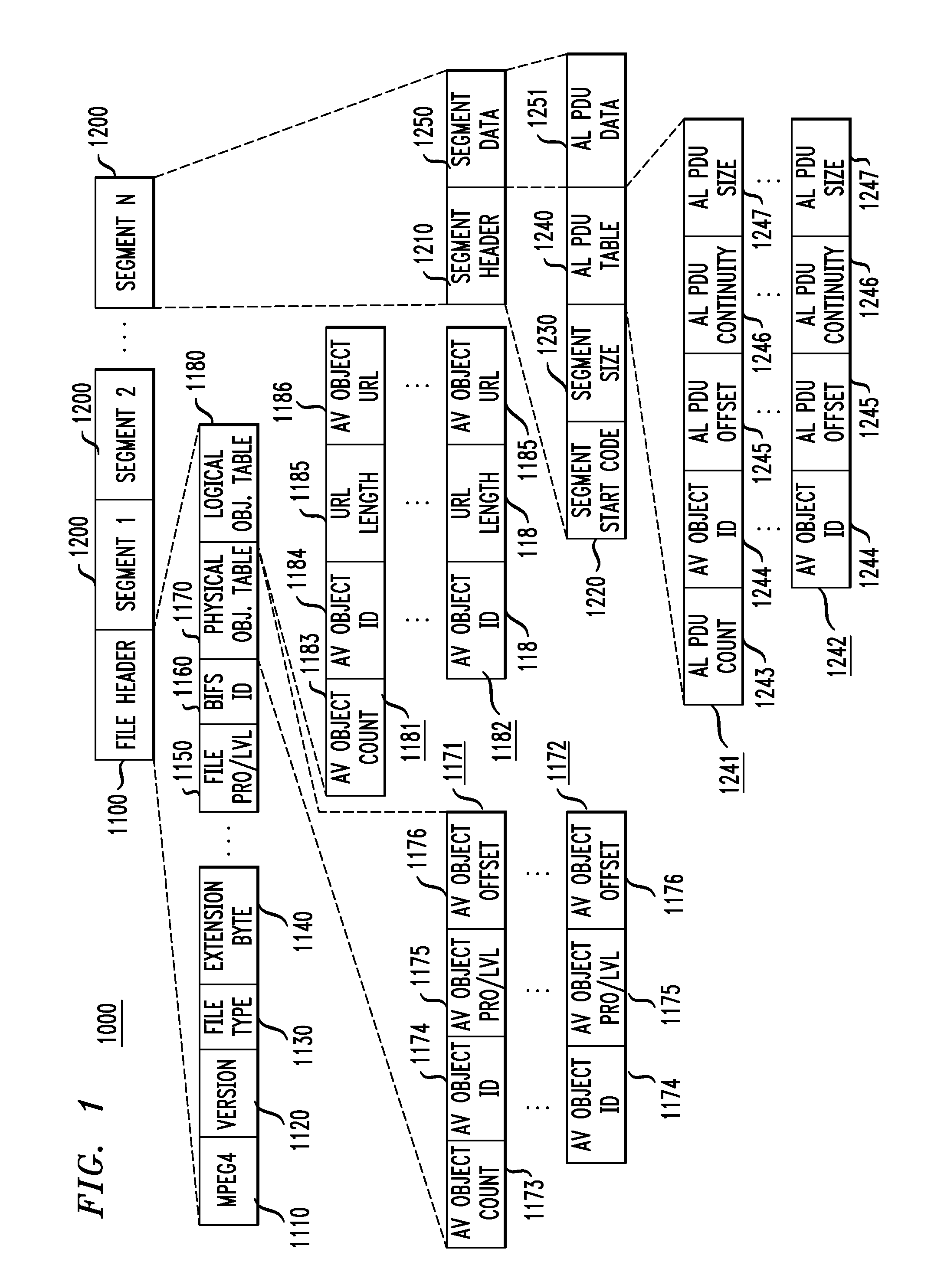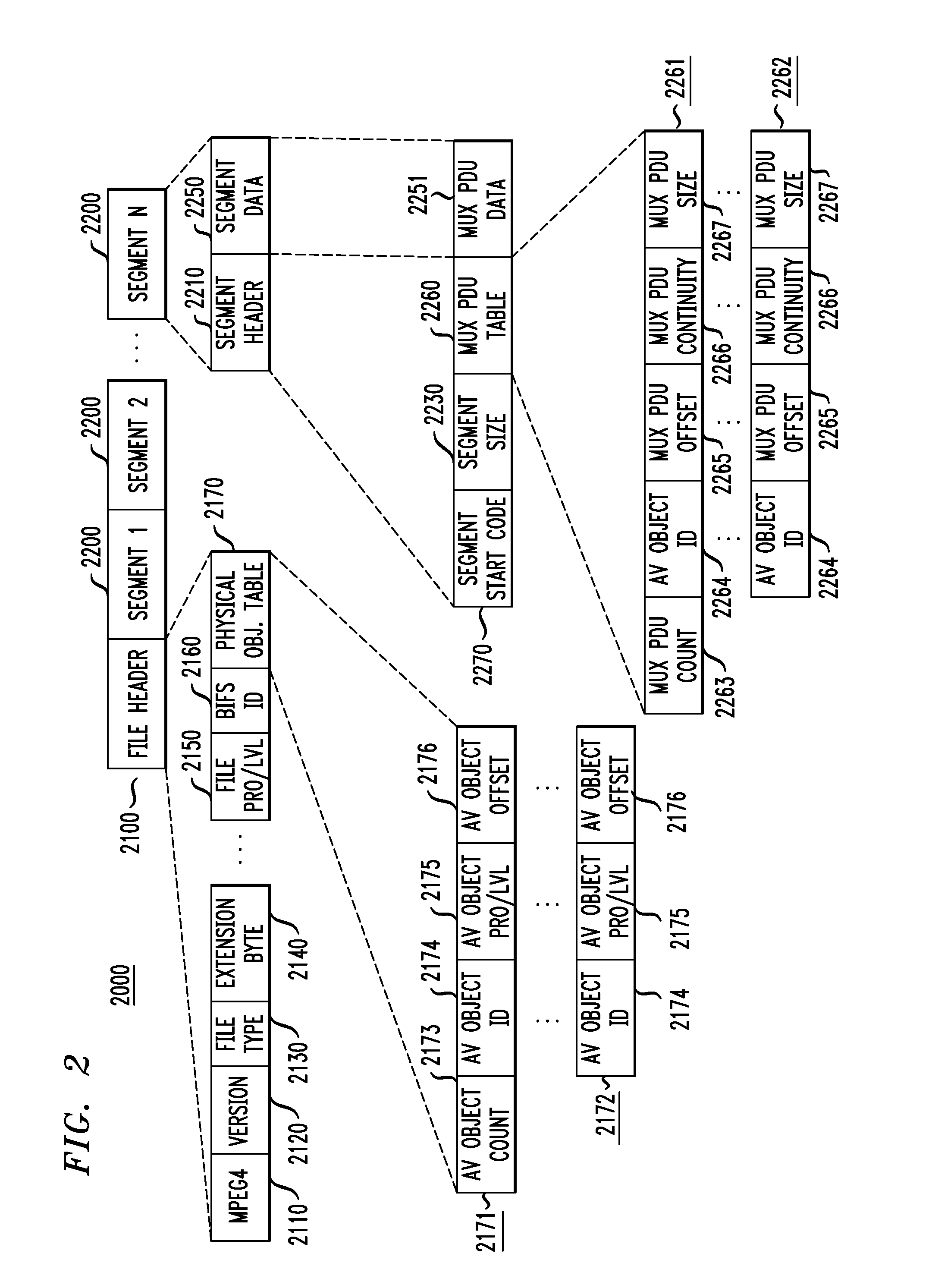System and method of organizing data to facilitate access and streaming
a data system and data technology, applied in the field of information processing, can solve the problems of choppy video output, affecting the delivery of video or audio content in real-time or streaming form, and affecting the delivery of video or audio content, so as to achieve enhanced audiovisual coding and storage techniques, enhanced formatting
- Summary
- Abstract
- Description
- Claims
- Application Information
AI Technical Summary
Benefits of technology
Problems solved by technology
Method used
Image
Examples
Embodiment Construction
[0041]The MPEG-4 standard is an ISO / IEC standard which is building on the proven success of three fields: digital television, interactive graphics applications, i.e., synthetic content, and the World Wide Web, which provides distribution of, and access to, content. The MPEG-4 standard will provide the standardized technological framework enabling the integration of the production, distribution and content access paradigms of the three fields. The MPEG-4 standard defines tools with which to represent individual audiovisual objects, both natural and synthetic, ranging from arbitrarily shaped natural video objects to sprites and face and body animations. These objects are encoded separately into their own elementary streams.
[0042]In addition, scene description information is provided separately, defining the spatio-temporal location of these objects in the final scene to be presented to the user. This also includes support for user interaction. The scene description uses a tree-based s...
PUM
| Property | Measurement | Unit |
|---|---|---|
| size | aaaaa | aaaaa |
| speed | aaaaa | aaaaa |
| time | aaaaa | aaaaa |
Abstract
Description
Claims
Application Information
 Login to View More
Login to View More - R&D
- Intellectual Property
- Life Sciences
- Materials
- Tech Scout
- Unparalleled Data Quality
- Higher Quality Content
- 60% Fewer Hallucinations
Browse by: Latest US Patents, China's latest patents, Technical Efficacy Thesaurus, Application Domain, Technology Topic, Popular Technical Reports.
© 2025 PatSnap. All rights reserved.Legal|Privacy policy|Modern Slavery Act Transparency Statement|Sitemap|About US| Contact US: help@patsnap.com



